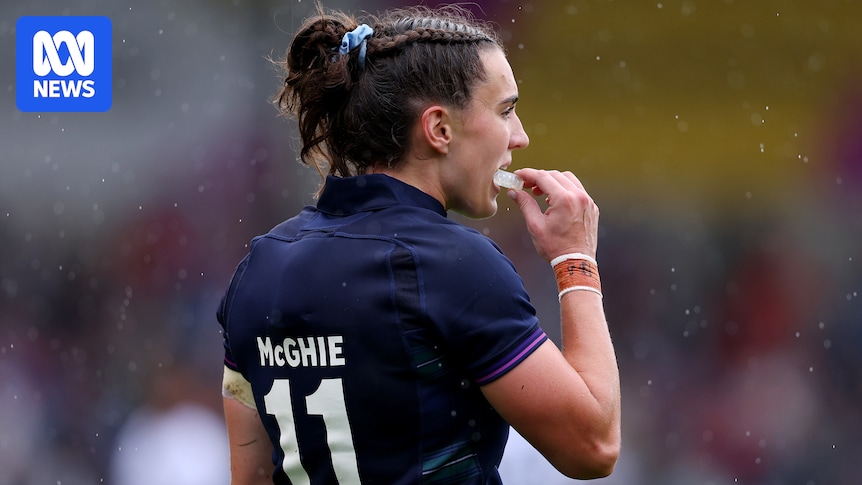
This year’s Women’s Rugby World Cup, hosted in England, has been celebrated as a landmark event for women’s sports, with initial viewership figures surpassing those of the entire 2022 tournament. However, beyond the impressive audience numbers, the competition is making headlines for its revolutionary approach to concussion management, a critical issue across numerous sports.
Concussions have been increasingly spotlighted due to rising cases of chronic traumatic encephalopathy (CTE) diagnosed posthumously, including in athletes like former West Coast Eagle Adam Hunter. In response, players from the 16 participating nations are trialing innovative LED mouthguards designed to signal potential concussive impacts.
How LED Mouthguards Work
The initiative is spearheaded by World Rugby’s science and medical manager, Dr. Lindsay Starling, and consultant Dr. Eanna Falvey, known for his work with the British and Irish Lions. Dr. Falvey clarifies that while the mouthguards do not diagnose concussions, they are engineered to predict when such injuries might occur.
“We know that bigger impacts are more likely to cause a concussion event, so what we’ve done is used the mouthguard to identify those large impacts,” Dr. Falvey explains. The mouthguards employ an in-built sensor and a ‘threshold’ system. When a player experiences an impact exceeding a certain force, the device flashes red and sends a Bluetooth signal to ground support staff, prompting a head injury assessment (HIA).
The current model, a development from a 2022 prototype, includes the visual alert feature. The threshold is determined by two key factors: peak linear acceleration (the speed of head movement forward or backward) and peak angular acceleration (the speed of head rotation).
Data-Driven Insights and Challenges
While the mouthguards provide a robust estimate of potential concussions, they are not infallible. Dr. Falvey notes, “What we’ve seen from our data set is that most of the concussion events happen above the threshold, but there are some that sit lower, and that’s what we’re currently evaluating.”
Over one weekend of the World Cup group stages, six alert events were recorded, with one incident not initially detected by medical staff. This suggests the mouthguard may identify approximately 18% of concussions that do not manifest symptoms immediately.
“If we don’t know about something, we can’t treat it, but the earlier we see these events, the better,” Dr. Falvey emphasizes.
Gender-Specific Concussion Patterns
Sex is a crucial factor in current concussion modeling, with the alert threshold set lower for women than men. Although women and men experience concussions at similar rates, the intensity and nature of impacts differ. Women tend to be concussed at lower intensities, resulting in a comparable overall number of concussions.
Female athletes also report more symptoms and for longer durations. Dr. Starling highlights this as an added advantage of their research, aiding teams in understanding female athletes better:
“It’s really helpful, even if those symptoms aren’t related to a concussion incident, because it’s a check-in point for our medical teams to understand what’s going on with our players,” she states.
The Future: Individualized Thresholds
World Rugby aims to further refine the mouthguard technology by setting individualized thresholds based on personal data, such as concussion history and symptom profiles. Dr. Falvey is eager to see these factors integrated into mouthguard settings.
Dr. Starling notes, “To individualize, you need to have a lot of data on a person, so we need players to wear their mouthguards for a [long] period of time to really understand what that player’s picture looks like.”
Some players experience more head acceleration events than others, even within the same role. Dr. Falvey suggests examining these players’ techniques to mitigate risks, questioning whether poor technique contributes to higher impact numbers.
Implications for Community Sports
The data collected at the elite level is anticipated to benefit community sports. Dr. Falvey reassures concerned parents that community-level rugby involves significantly fewer and less intense hits.
In community settings, LED mouthguards can alert onlookers to potential concussions without official monitoring. World Rugby is working to establish a lower threshold for these environments.
Additionally, World Rugby collaborates with Biocore, a US company associated with the NFL, to gather extensive data, including impact duration and power. The insights extend beyond sports, with interest from organizations like the FBI and the American Department of War, concerned about head impacts in military scenarios.
“My attitude on this is that the data is not a competitive thing, this is something we can all share and learn from each other,” Dr. Falvey said.
With rugby’s global reach across 120 countries, the potential for shared learning and application of this data across various contact sports and beyond is immense.







